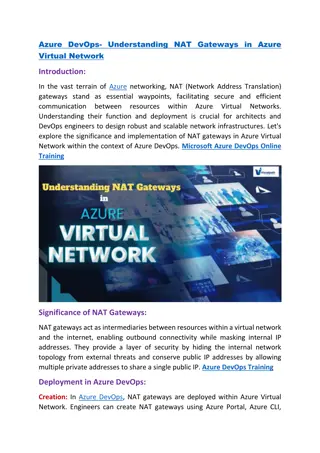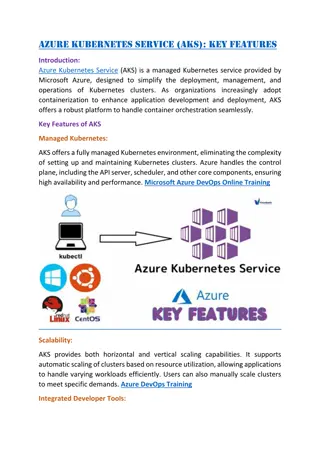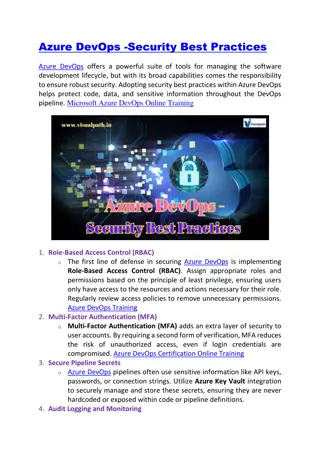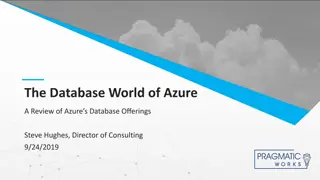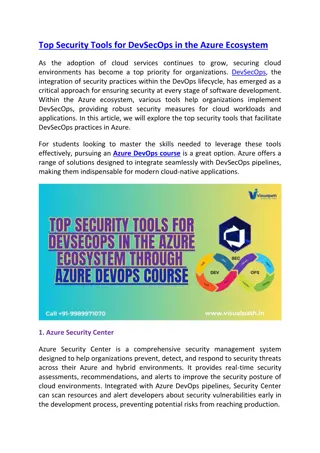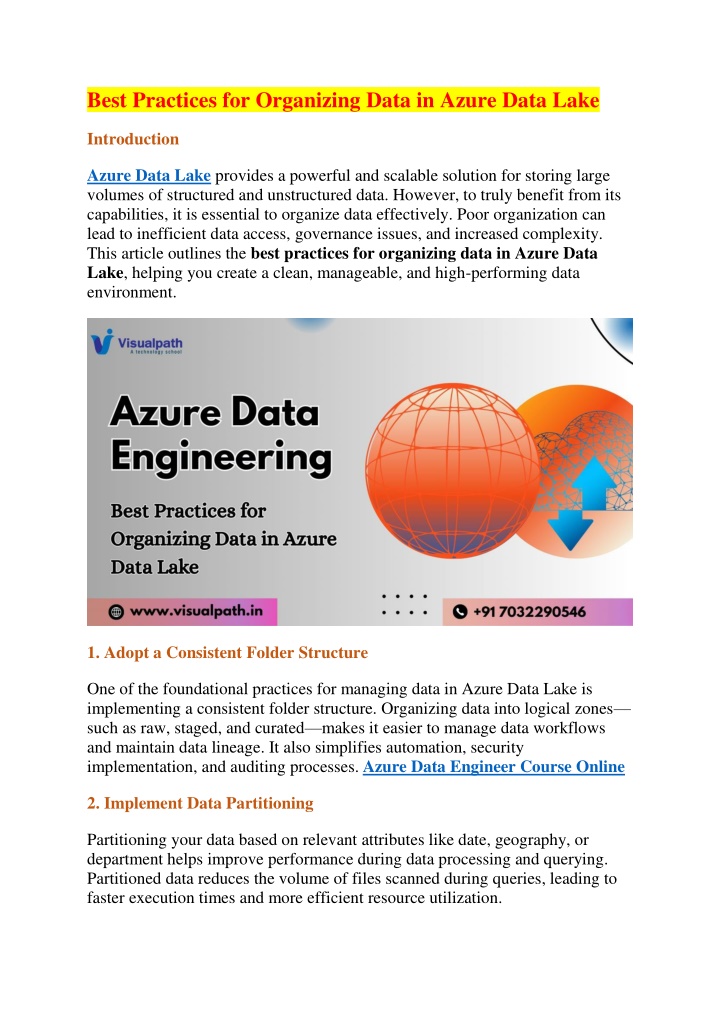
Microsoft Azure Data Engineer | Azure Data Engineer Training
Enroll in the Azure Data Engineer Course in Ameerpet with VisualPath and gain practical skills through real-time projects. Our Azure Data Engineer Course offers expert mentorship, flexible weekend batches, and lifetime access to recordings. Become a
Download Presentation

Please find below an Image/Link to download the presentation.
The content on the website is provided AS IS for your information and personal use only. It may not be sold, licensed, or shared on other websites without obtaining consent from the author. If you encounter any issues during the download, it is possible that the publisher has removed the file from their server.
You are allowed to download the files provided on this website for personal or commercial use, subject to the condition that they are used lawfully. All files are the property of their respective owners.
The content on the website is provided AS IS for your information and personal use only. It may not be sold, licensed, or shared on other websites without obtaining consent from the author.
E N D
Presentation Transcript
Best Practices for Organizing Data in Azure Data Lake Introduction Azure Data Lake provides a powerful and scalable solution for storing large volumes of structured and unstructured data. However, to truly benefit from its capabilities, it is essential to organize data effectively. Poor organization can lead to inefficient data access, governance issues, and increased complexity. This article outlines the best practices for organizing data in Azure Data Lake, helping you create a clean, manageable, and high-performing data environment. 1. Adopt a Consistent Folder Structure One of the foundational practices for managing data in Azure Data Lake is implementing a consistent folder structure. Organizing data into logical zones such as raw, staged, and curated makes it easier to manage data workflows and maintain data lineage. It also simplifies automation, security implementation, and auditing processes.Azure Data Engineer Course Online 2. Implement Data Partitioning Partitioning your data based on relevant attributes like date, geography, or department helps improve performance during data processing and querying. Partitioned data reduces the volume of files scanned during queries, leading to faster execution times and more efficient resource utilization.
3. Use Metadata for Data Discovery Incorporating metadata allows users and systems to understand the content, structure, and purpose of data assets. Metadata should include details such as data source, owner, schema, frequency of updates, and data sensitivity. Using metadata tools and catalogs improves data discoverability and facilitates better data governance.Azure Data Engineer Training 4. Enforce Access Controls and Data Governance Organizing data with security in mind ensures that sensitive information is protected and only accessible to authorized users. Use Azure Role-Based Access Control (RBAC) and Access Control Lists (ACLs) to manage access at different folder levels. Segregating data based on sensitivity such as public, internal, or confidential further strengthens security and compliance. 5. Follow Clear File Naming Conventions A standardized file naming convention supports automation, enhances readability, and simplifies data processing. File names should be descriptive and consistent, indicating important attributes like content type, source, and date. Avoid arbitrary or unclear names that could lead to confusion or mismanagement.Azure Data Engineer Training Online 6. Choose Appropriate File Formats Selecting the right file format plays a key role in optimizing storage and processing. For analytical workloads, columnar formats like Parquet or Avro are preferred due to their support for schema evolution, compression, and faster performance. Choosing the right format ensures compatibility and scalability across Azure services. 7. Automate Data Lifecycle Management Automating the management of data over its lifecycle helps reduce storage costs and maintain data relevance. Set policies for archiving, retention, and deletion of data based on business requirements. This ensures the data lake remains clean and avoids the buildup of outdated or unused data.Azure Data Engineer Course 8. Establish Clear Data Ownership and Documentation Defining data ownership ensures accountability and smooth data management. Data owners are responsible for data quality, updates, and permissions.
Additionally, maintaining documentation for datasetsincluding their purpose, refresh frequency, and structure enhances collaboration and eases onboarding for new team members. Conclusion Properly organizing data in Azure Data Lake is crucial for maintaining an efficient, secure, and scalable data architecture. By implementing consistent folder structures, leveraging metadata, applying robust access controls, and automating lifecycle management, organizations can transform their data lakes into strategic assets. Adopting these best practices ensures better performance, easier data discovery, and strong governance essential for any modern data-driven enterprise. Trending Courses: Artificial Intelligence, Azure AI Engineer, SAP PaPM Visualpath stands out as the best online software training institute in Hyderabad. For More Information abouttheAzure Data Engineer Online Training Contact Call/WhatsApp: +91-7032290546 Visit: https://www.visualpath.in/online-azure-data-engineer-course.html










